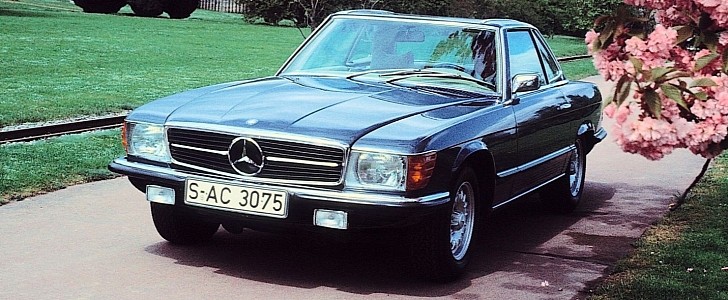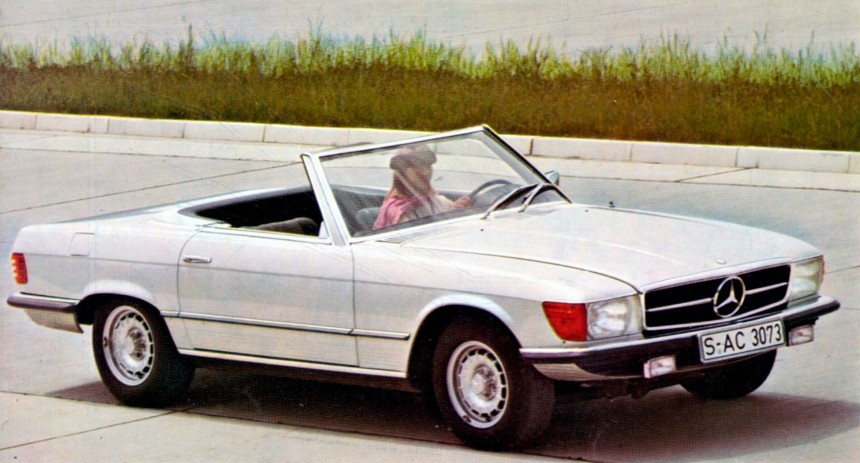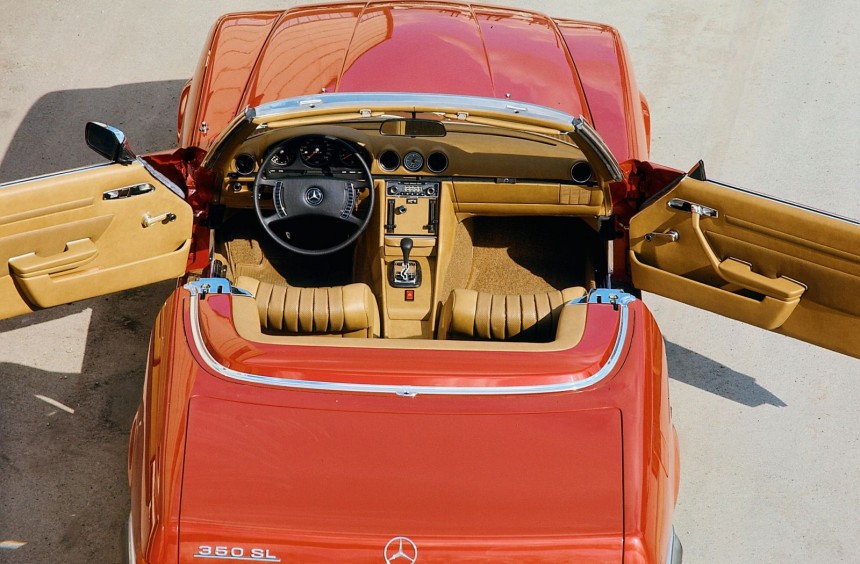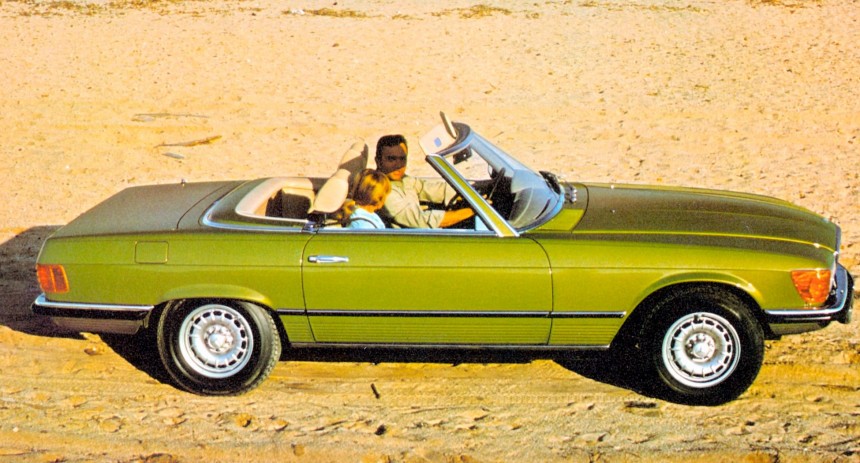Building on its famous predecessors' legacy, the R107 SL was one of the most sought-after luxury roadsters during the ‘70s and ‘80s. It showcased German engineering at its finest, and for the first time in model history, it was available with V8 power. That made it even more appealing for American customers than its popular predecessor.
Driving a convertible is an experience that heightens the senses and widens the smile on anyone’s face, especially if the vehicle in question is a nimble two-seater with a powerful engine under its hood.
During the early seventies, drivers who wanted such a sports car dreamed about a Corvette, but those who wanted to add luxury and refinement to the experience had a totally different car in mind, the all-new Mercedes-Benz 350 SL.
Exactly half of century ago, the German automaker began production of this model, seeking to build on the success of the W113 series.
In terms of styling, the new R107 roadster retained the low-profile design of its direct ancestor and also came with a with a fully retractable fabric top as well as a removable hardtop, yet got many enhancements that made it distinctly different.
The bodywork's updated design was inspired by the brand’s contemporary passenger car lineup, becoming boxier and more aggressive than its predecessor.
Since safety was a top priority, the many technical innovations included an individual frame-floor unit that featured a multi-layer construction with metal sheets of different thicknesses for improved crumple behavior.
Moreover, the body came with redesigned A-pillars and a new windscreen frame made from high-strength steel. The latter housed a glued-in windshield, another safety upgrade that differentiated the new model from the W113 series.
The interior was also fundamentally redesigned. It now featured a modern dashboard, a large center console, and a new four-spoke steering wheel, also designed with safety in mind.
Major differences from the preceding model were also noticeable from a technical point of view. The suspension system was based on current Mercedes-Benz upper medium-size models, yet the most notable change was found under the hood.
For the first time on an SL, the engineers fitted the roadster with a 200-hp (147 kW) 3.5-liter V8 taken from the W111 coupe and cabriolet models and the W 108/109 sedans.
Sales in the U.S. debuted in 1972, and the American SL 350 was fitted with a larger 4.2-liter V8 mated to a three-speed automatic, as well as other minor modifications such as four round low-output sealed beam headlights.
The sports car was a success from the start, quickly surpassing the older model in sales. This prompted Mercedes to continuously upgrade the SL lineup with additional engine options and features throughout the ‘70s and ‘80s.
It was produced until 1989 in over 237,000 units and its eighteen years of service make it the second longest-running series in company history after the G-Class. Nowhere was it more popular than the United States, where more than 65% of the R107s and C107s (the coupe version) were sold.
To this day, it remains one of the most popular luxury roadsters ever made and one of the most underappreciated. Those who love this car should buy one now as surviving models in great condition can be found for well under $35,000.
During the early seventies, drivers who wanted such a sports car dreamed about a Corvette, but those who wanted to add luxury and refinement to the experience had a totally different car in mind, the all-new Mercedes-Benz 350 SL.
Exactly half of century ago, the German automaker began production of this model, seeking to build on the success of the W113 series.
The bodywork's updated design was inspired by the brand’s contemporary passenger car lineup, becoming boxier and more aggressive than its predecessor.
Since safety was a top priority, the many technical innovations included an individual frame-floor unit that featured a multi-layer construction with metal sheets of different thicknesses for improved crumple behavior.
Moreover, the body came with redesigned A-pillars and a new windscreen frame made from high-strength steel. The latter housed a glued-in windshield, another safety upgrade that differentiated the new model from the W113 series.
Major differences from the preceding model were also noticeable from a technical point of view. The suspension system was based on current Mercedes-Benz upper medium-size models, yet the most notable change was found under the hood.
For the first time on an SL, the engineers fitted the roadster with a 200-hp (147 kW) 3.5-liter V8 taken from the W111 coupe and cabriolet models and the W 108/109 sedans.
Sales in the U.S. debuted in 1972, and the American SL 350 was fitted with a larger 4.2-liter V8 mated to a three-speed automatic, as well as other minor modifications such as four round low-output sealed beam headlights.
It was produced until 1989 in over 237,000 units and its eighteen years of service make it the second longest-running series in company history after the G-Class. Nowhere was it more popular than the United States, where more than 65% of the R107s and C107s (the coupe version) were sold.
To this day, it remains one of the most popular luxury roadsters ever made and one of the most underappreciated. Those who love this car should buy one now as surviving models in great condition can be found for well under $35,000.















